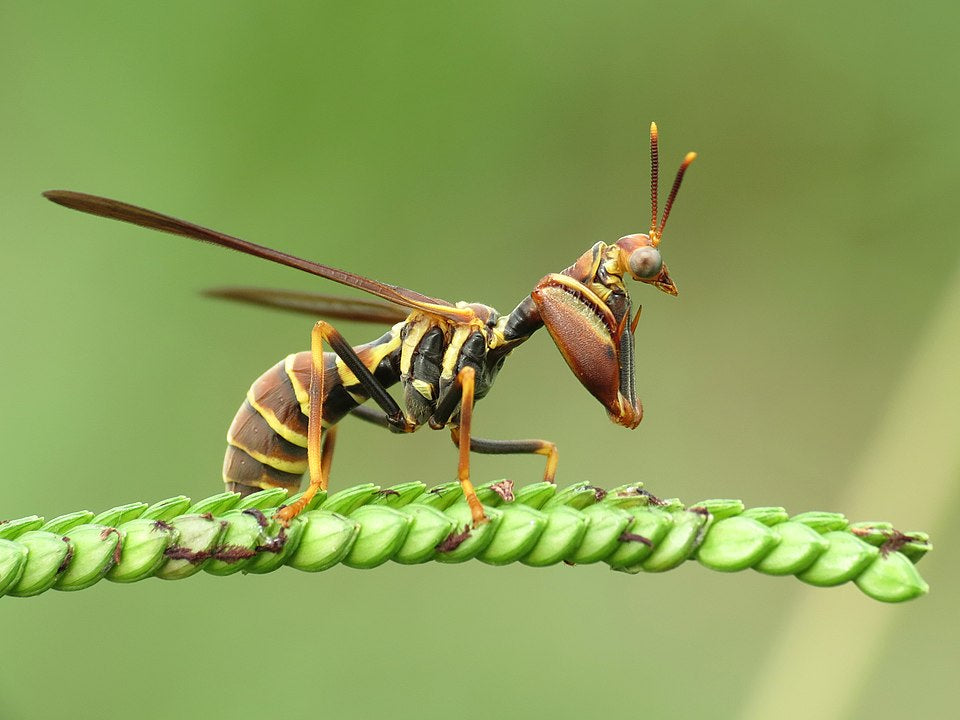Menu
-
- Home
- Contact
- Search
-
Shop
- Live Feeder Insects
-
Supplies
- Habitats
- Feeders
- Feeders and Microfauna Breeding Supplies
- Bioactive Kits
- Bioactive Supplies
- Containers
- Insect Culture Cups
- Insect Culturing Cups and Lids
- Classroom Projects
- Live Air Plants bioactive
- Substrates
- Lighting and Heating
- Cages, Habitats, Bug Boxes, Vivariums, Insectariums
- Bark
- Shipping supplies, Heat packs, cold packs, containers
- Bio-Active
- Plants
- Mantis Gallery
- Usmantis Reviews
- Praying Mantis
- Mantis
- Praying Mantis eggs ootheca for pest control
- BioActive Supplies
- Beneficial Insects
- Help Videos
- Top 5 Praying mantis as pets,
- Blog
-
Shop By Family
- Praying Mantis
- Care Sheets
- Track Order
- Live Feeder Insects
- Wholesale prices for bulk orders
- FAQ
- Galleries of Mantis Videos
-
- Home
- Search
- About us
- Shipping
- Refund Policy
- Track Orders
- Contact us
- Blog
- Beneficial Insects
- Sitemap
- Reviews
-
Film production resources
- Wholesale
- FAQ
- Login
-
English

How Praying Mantises Hear: One ear
July 19, 2024 2 min read
The mantis is the only animal known to listen to its world through one ear; what it often hears is bats zeroing in to eat it.
Scientists long thought that praying mantises were deaf, but now biologists know that the insects have a single ear that enables them to pick up sounds far beyond the range of human hearing.
When sitting still to wait for prey, mantises often mimic leaves or twigs. According to University of Maryland neuroscientist David Yager, mantises on the move also can do an excellent imitation of a fighter jet. When a flying mantis is trying to escape from a hungry bat, one of its primary nighttime enemies, it can suddenly pull up in midair, turn to the side and drop into a power dive similar to that of a military pilot avoiding an adversary.
"It's not just a fall," Yager says. "They go faster as they go down." Sometimes a bat can follow; other times, it has to give up pursuit. When a bat stays on a mantis’ tail, the insect may hit the ground as a last resort. Being small and agile, it survives the crash. Without the ability to hear the bats, no mantis would stand a chance.
Why Is the Mantis Praying?
There are some 2,300 mantis species worldwide, including about 20 in the United States. Most are so-called "sit and wait" predators that feed on moths, crickets and other insects, keeping their front legs flexed so that they look like they are praying. In fact, they are poised for a sudden, blurring extension to catch food species that pass by. Some bigger mantis species can snag even a small lizard or hummingbird.
 Mantids detect attacking bats by picking up the mammals' high-frequency or ultrasonic chirps, so clearly the insects aren't deaf, even though they seem earless. Yager found their secret while a graduate student in the late 1980s, when he discovered that most praying mantis species have single ears deep in the centers of their thoraxes, or chest segments. "The ear doesn’t look like any other ear," says Yager, who is studying the auditory systems of insects. "They're the only animals known to have just one ear."
Mantids detect attacking bats by picking up the mammals' high-frequency or ultrasonic chirps, so clearly the insects aren't deaf, even though they seem earless. Yager found their secret while a graduate student in the late 1980s, when he discovered that most praying mantis species have single ears deep in the centers of their thoraxes, or chest segments. "The ear doesn’t look like any other ear," says Yager, who is studying the auditory systems of insects. "They're the only animals known to have just one ear."
Sources/Read More:
https://www.nwf.org/Magazines/National-Wildlife/2010/How-the-Praying-Mantis-Hears
https://askentomologists.com/2015/03/12/why-do-mantids-only-have-one-ear/
Image Credit:
Nancy Miorelli*
Image Source:
Ask Entomologists (see above source)
*Disclaimer - Copyright Material on S:EI:
S:EI may share content not authorised for use by its owner (ie. copyright material). Our use of this material falls under the guidelines of fair use, as it is for educational purposes only (Section 107 of the Copyright Act).
Scientists long thought that praying mantises were deaf, but now biologists know that the insects have a single ear that enables them to pick up sounds far beyond the range of human hearing.
When sitting still to wait for prey, mantises often mimic leaves or twigs. According to University of Maryland neuroscientist David Yager, mantises on the move also can do an excellent imitation of a fighter jet. When a flying mantis is trying to escape from a hungry bat, one of its primary nighttime enemies, it can suddenly pull up in midair, turn to the side and drop into a power dive similar to that of a military pilot avoiding an adversary.
"It's not just a fall," Yager says. "They go faster as they go down." Sometimes a bat can follow; other times, it has to give up pursuit. When a bat stays on a mantis’ tail, the insect may hit the ground as a last resort. Being small and agile, it survives the crash. Without the ability to hear the bats, no mantis would stand a chance.
Why Is the Mantis Praying?
There are some 2,300 mantis species worldwide, including about 20 in the United States. Most are so-called "sit and wait" predators that feed on moths, crickets and other insects, keeping their front legs flexed so that they look like they are praying. In fact, they are poised for a sudden, blurring extension to catch food species that pass by. Some bigger mantis species can snag even a small lizard or hummingbird.

Sources/Read More:
https://www.nwf.org/Magazines/National-Wildlife/2010/How-the-Praying-Mantis-Hears
https://askentomologists.com/2015/03/12/why-do-mantids-only-have-one-ear/
Image Credit:
Nancy Miorelli*
Image Source:
Ask Entomologists (see above source)
*Disclaimer - Copyright Material on S:EI:
S:EI may share content not authorised for use by its owner (ie. copyright material). Our use of this material falls under the guidelines of fair use, as it is for educational purposes only (Section 107 of the Copyright Act).
Leave a comment
Comments will be approved before showing up.
Also in Praying Mantis News! Join the conversation.

orchid mantis evolutionary research
June 06, 2025 2 min read
The orchid mantis (Hymenopus coronatus) transitions from black-and-red to pink-white coloration during development, a shift driven by the Redboy pigment transporter. This transition serves different ecological functions: red coloration helps hatchlings mimic stink bugs for predator avoidance, while the pink-white coloration of older nymphs provides floral camouflage for both predator avoidance and prey attraction. The Redboy transporter, upregulated by ecdysone, facilitates this shift by exporting red pigments in early stages and importing white pigments in later stages.
Evolutionary Basis:
Redboy's Role:
The Redboy transporter, a novel ABCG transporter, arose by gene family expansion and positive selection, specifically to handle the transition from red to white coloration, according to research on Nature.
Hormonal Regulation:
The hormone ecdysone regulates Redboy, ensuring the pigment transition happens at the appropriate developmental stage, according to research on ResearchGate.
Genetic Adaptation:
The evolutionary changes in Redboy have allowed orchid mantises to adapt their body color to different life stages and ecological niches.
Ecological Functions:
Aposematic Mimicry (Hatchlings):
The initial black-and-red coloration serves as a warning signal, mimicking the appearance of stink bugs, which are known to be distasteful or toxic to predators.
Camouflage (Older Nymphs):
The pink-white coloration provides floral camouflage, helping the mantis blend in with flowers and avoid detection by predators.
Prey Attraction:
The flower-like appearance also attracts unsuspecting prey, such as small insects, to their location, enhancing the mantis's hunting success.
In summary, the orchid mantis's body color transition is a fascinating example of ontogenetic camouflage and adaptive evolution, where the color changes throughout the mantis's life serve distinct ecological roles in where the color changes throughout the mantis's life serve distinct ecological roles in predator avoidance and prey attraction.
Read More

Mantis fly Mantispidae, very special insect
October 15, 2024 3 min read
Mantispidae, they don’t sting! 

Recent Articles
-
orchid mantis evolutionary research
June 06, 2025
-
New Yorker article 1955 Mantis Man
March 09, 2025
-
Mantis fly Mantispidae, very special insect
October 15, 2024
-
Do insects have feelings? Love or Hate? What’s your opinion
September 09, 2024
-
How Praying Mantises Hear: One ear
July 19, 2024
-
Identifying Domestic species
July 19, 2024
-
Invasive claims and irresponsible advice
April 13, 2024
-
Is it time for insect researchers to consider their subjects’ welfare?
April 08, 2024
-
My Awesome Summer by P. Mantis Children’s book
April 07, 2024
-
Toxodera
April 06, 2024
Categories
- animal husbandry
- best feeders
- best mantis for pest control
- breeding praying mantis
- buy praying mantis
- Cannabis
- crickets
- discussion
- dormitory pet
- Drosophila
- education
- egg
- entomology
- fertility
- flightless fruit flies
- Flower mantis
- Friendly Bugs For Cannabis
- fruit fly culture
- geometric morphometrics
- Ghost mantis
- happy experience with pets
- Hydei
- Hymenopodidae
- Hymenopus coronatus
- invasive
- keeping insects alive
- Lucky mantis
- Major League baseball Perez Kisses Lucky Mantis!
- make money
- mantis for dummies
- mantis ooth
- Mantodea
- melanogaster
- mimicry
- mismolt
- new species
- ooth
- ooth care
- ootheca
- P paradoxa
- pest
- Pest control
- pet nutrition
- praying mantis
- praying mantis care
- praying mantis for sale
- reptile feeders
- School project
- scientific research
- Sexing praying mantis
- Shipping
- signalling
- stem
- stenophylla
- Store news
- stress from shipping
- usmantis
- we buy mantis
Menu Title
This section doesn’t currently include any content. Add content to this section using the sidebar.
Subscribe
Sign up to get the latest on sales, new releases and more …
Invalid Password
Enter